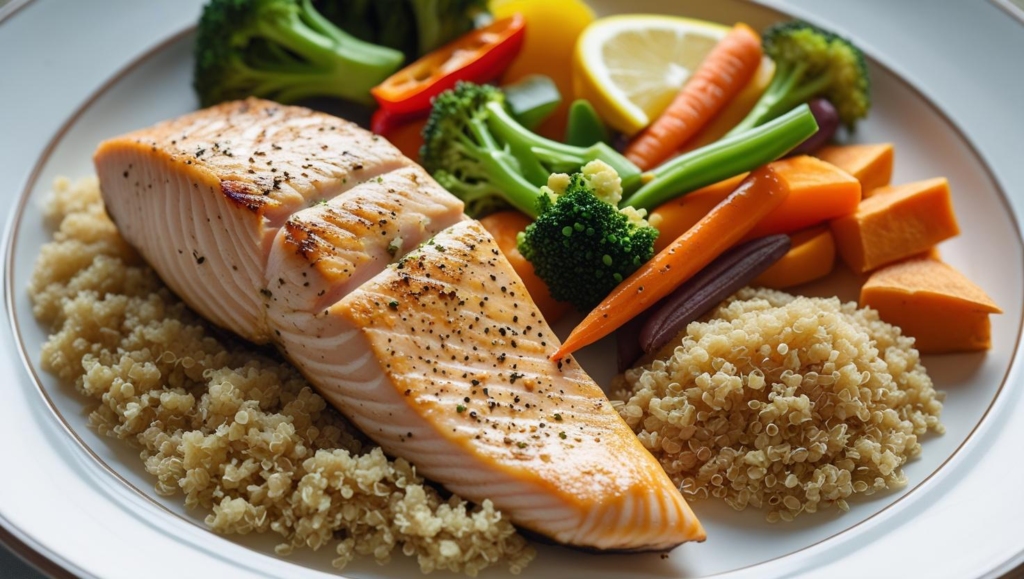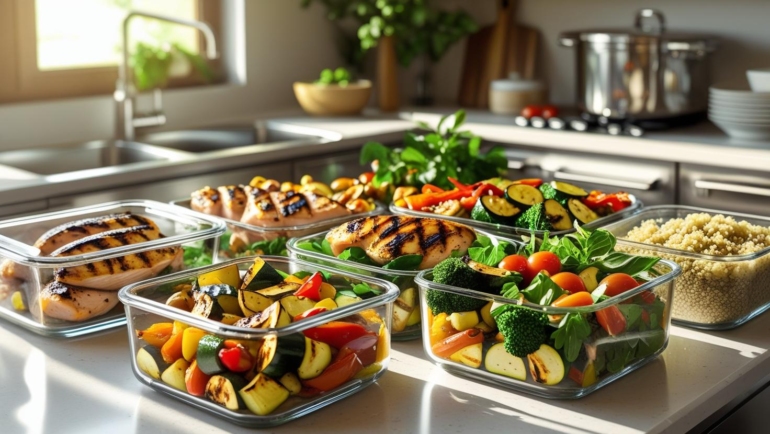29Views 0Comments

How to Create a Balanced Diet for Effective Weight Loss
If you’re trying to lose weight, one of the most important steps you can take is to create a balanced diet that helps you shed pounds without feeling deprived. A balanced diet for weight loss doesn’t mean extreme calorie restriction or cutting out entire food groups. It’s about finding a way to eat that fuels your body with the right nutrients while also promoting fat loss. Let’s dive into the key components of a healthy diet for weight loss and how you can create a plan that works for you.
1. Focus on Whole, Nutrient-Dense Foods
When it comes to weight loss, the focus should be on whole foods that are packed with nutrients. These foods are typically lower in calories and higher in vitamins, minerals, and fiber, making them the perfect choice for anyone looking to lose weight in a healthy way. Opt for vegetables, fruits, whole grains, lean proteins, and healthy fats. These foods will not only keep you feeling full for longer but will also provide your body with the essential nutrients it needs for optimal performance.
Examples of Whole, Nutrient-Dense Foods:
- Vegetables: Spinach, broccoli, kale, bell peppers, and zucchini.
- Fruits: Apples, berries, oranges, and avocados.
- Whole Grains: Brown rice, quinoa, oats, and whole wheat bread.
- Lean Proteins: Chicken breast, turkey, tofu, fish, and beans.
- Healthy Fats: Olive oil, almonds, chia seeds, and flaxseeds.
2. Practice Portion Control for Better Results
One of the most important aspects of any balanced diet for weight loss is portion control. Even if you’re eating healthy, overeating can still lead to weight gain. Learning how to control your portions is essential for staying in a calorie deficit—meaning you’re consuming fewer calories than your body needs to maintain its current weight. By controlling portion sizes, you can enjoy your favorite healthy foods without going overboard.
Tips for Portion Control:
- Use smaller plates: Research shows that people tend to eat less when using smaller plates.
- Measure servings: Use measuring cups or a food scale to ensure you’re eating the right portions.
- Focus on eating slowly: Take your time to chew and enjoy your food, giving your body time to signal when you’re full.
3. Include a Variety of Protein Sources
Protein is a critical component of any diet, especially if you’re aiming for weight loss. Protein helps to build muscle, boost metabolism, and keep you feeling full longer, which helps prevent overeating. Include a variety of protein sources in your diet, such as lean meats, fish, eggs, and plant-based options like beans, lentils, and tofu.
Protein-Rich Foods to Include:
- Lean meats: Chicken breast, turkey, and lean beef.
- Fish: Salmon, tuna, and cod.
- Plant-based proteins: Tofu, tempeh, chickpeas, and quinoa.
- Eggs: A complete source of protein that’s also rich in healthy fats.
4. Don’t Skip Healthy Fats
Many people think that to lose weight, they need to cut fat out of their diet entirely, but that’s not the case. Healthy fats play an essential role in a balanced diet for weight loss. They help your body absorb vitamins, support cell function, and keep you feeling full between meals. Focus on unsaturated fats, which are found in foods like avocados, nuts, seeds, and olive oil. These fats can improve heart health and support overall well-being, making them a key part of any weight loss plan.
Healthy Fats to Include:
- Avocados: Full of heart-healthy monounsaturated fats.
- Nuts: Almonds, walnuts, and cashews.
- Seeds: Chia seeds, flaxseeds, and pumpkin seeds.
- Olive oil: Great for cooking or as a dressing.

5. Stay Hydrated for Optimal Performance
Staying hydrated is crucial when following a balanced diet for weight loss. Sometimes, thirst can be mistaken for hunger, leading you to eat when your body actually just needs water. Drinking enough water throughout the day will help control your appetite, boost your metabolism, and improve overall digestion.
Hydration Tips:
- Drink water before meals: This can help you feel full and reduce the likelihood of overeating.
- Carry a water bottle: Keep water with you throughout the day to remind yourself to stay hydrated.
- Infuse your water: Add fresh fruit or herbs to your water for a natural flavor boost without added calories.
6. Plan and Prepare Your Meals
Meal planning is one of the most effective ways to stay on track with a balanced diet for weight loss. When you plan your meals in advance, you make healthier choices, avoid last-minute unhealthy food decisions, and can ensure you’re eating the right portions. Preparing meals ahead of time also saves time during the week, ensuring you have nutritious meals ready to go.
Meal Prep Tips:
- Prepare meals in bulk: Cook large portions of grains, proteins, and vegetables, then divide them into individual containers for easy access throughout the week.
- Choose versatile ingredients: Select foods that can be used in multiple meals, such as quinoa, chicken, and roasted veggies.
- Have healthy snacks on hand: Keep pre-portioned snacks like nuts, fruits, or Greek yogurt ready for when hunger strikes.

